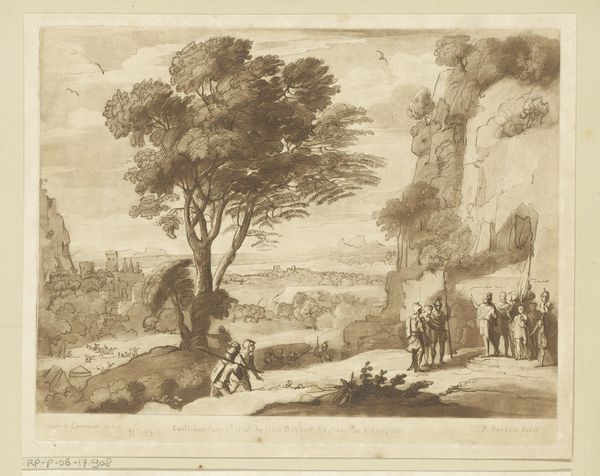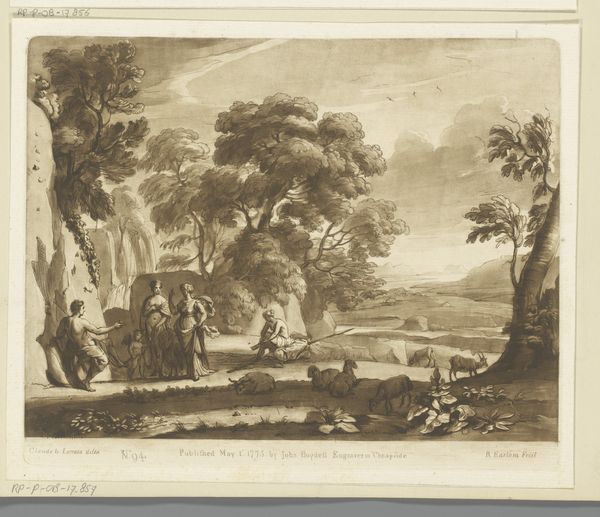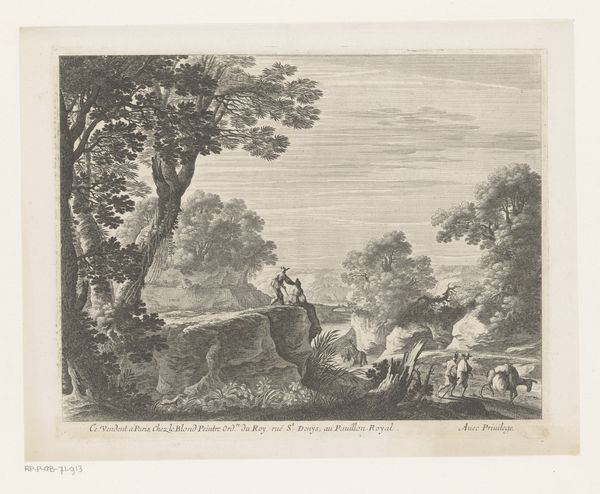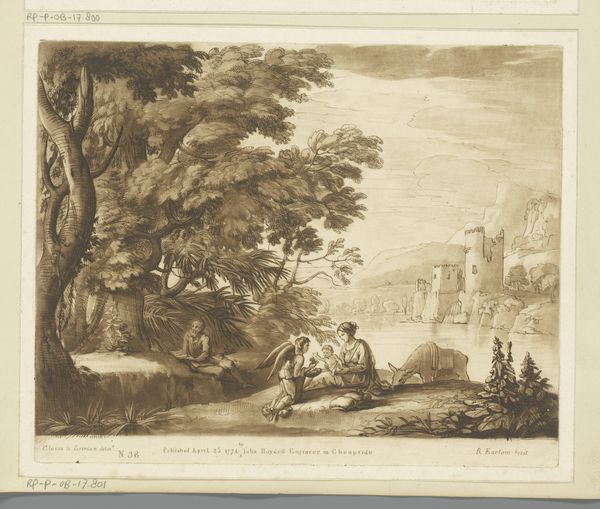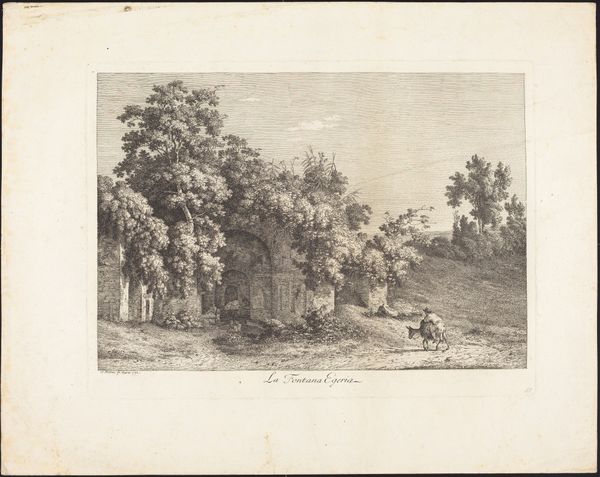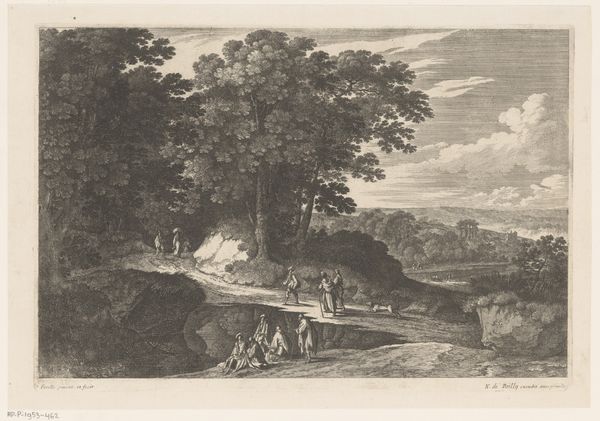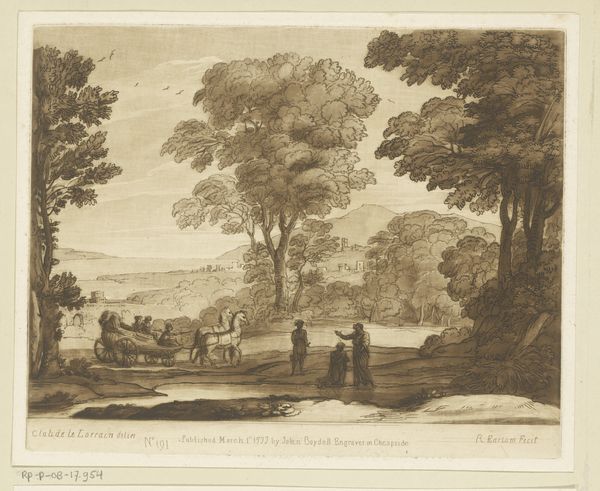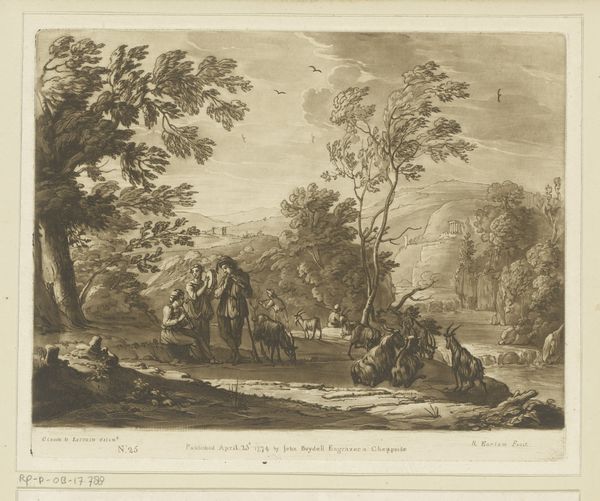
drawing, etching, watercolor
#
drawing
#
neoclacissism
#
lake
#
water colours
#
etching
#
pencil sketch
#
landscape
#
charcoal drawing
#
watercolor
#
watercolor
Dimensions: height 206 mm, width 257 mm
Copyright: Rijks Museum: Open Domain
Curator: Richard Earlom, likely in 1774, crafted this view of Lake Albano using etching and watercolor. Titled "Gezicht op het Meer van Albano, met vijf herders," it currently resides here at the Rijksmuseum. What’s your initial reaction? Editor: It has a curious, sepia-toned stillness. The textures, especially in the trees, feel deliberate. I am thinking about how such work comes into being. Curator: Absolutely. Let's consider that social dynamic, shall we? It evokes a scene of pastoral leisure, but framed with the undercurrent of labor implied by the presence of the herders. Does it offer a critical lens on that social hierarchy? Or simply reproduce it? Editor: Good point. And looking closer, the subtle variations in the ink—the way Earlom builds depth with the layers—hints at a complex production process. He builds density where one expects it less so. How might the consumption of such an image reinforced existing structures? Curator: Indeed, it may both romanticize and subtly critique aspects of power. The artwork subtly reflects contemporary socio-economic landscapes. This speaks volumes about gendered representation in the visual arts and the expectations placed upon female figures to embody either purity or temptation. Editor: Precisely! We can dig a little deeper here. Consider the tools at his disposal—the etching needles, the papers, the watercolor pigments; each holds its own history, its own connection to material extraction and skilled craft. This is not only an act of artistic expression. The tools of reproduction mirror its availability in society at the time, and its affordability for mass audiences. Curator: Your mention of tools leads to think to his decision-making, shaping, and conveying ideology, but from an external viewpoint, not only as the personal. Editor: These "five herders" depicted almost centrally prompt one question: are we looking at an idealization, or a grounded view of life and leisure near Albano Lake at the time of production? That may explain much of the message sent from its making, which now rests with the consumption of art history audiences. Curator: Exactly, thinking about its circulation and who had access, what were the spaces where something like this will appear as propaganda or a gentle landscape? It invites to reevaluate this narrative around gendered spaces too. Editor: Yes, thinking about production, consumption, its purpose. Hopefully listeners feel encouraged to linger here and find a connection. Curator: Definitely! Perhaps they'll notice some new layer or context next time they view the work through this framework.
Comments
No comments
Be the first to comment and join the conversation on the ultimate creative platform.

